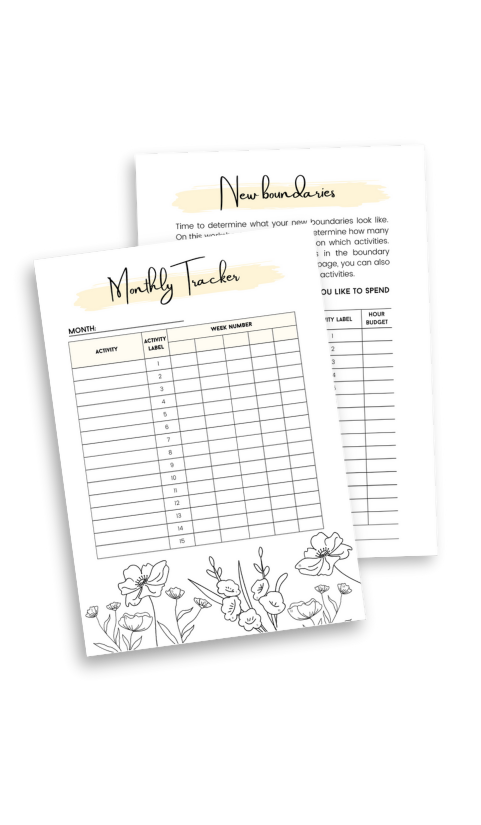Highly sensitive and suffering from narcissistic abuse? Learn how to identify narcissistic abuse and how to heal the wounds caused by it.
Estimated reading time: 9 minutes
Are you highly sensitive and experiencing low self-worth and self-esteem after interacting with a specific person in your life? Do you feel this unexplainable hurt inside you and nothing that you do seems to cure your pain? There is a slight chance that you are the victim of narcissistic abuse.
How To Identify Narcissistic Abuse
The best way to find the right solutions to heal, is to be able to identify whether or not you are a victim of narcissistic abuse. By being aware of the cause of your feelings and current state of mind, you will be able to address your issues. In the list below, you can find some of the most common behaviours and situations that occur during narcissistic abuse:
1. Lying
When you catch the person you suspect to perform narcissistic abuse lying on a regular basis, this is an indicator that this person might have narcissistic traits. Perhaps you caught the narcissist in the act of lying multiple times and your gut told you that something was off. Most likely, it was. Narcissists lie to avoid taking responsibility and to get things the way they want them to be.
2. Gaslighting
One of the most common strategies that narcissists use to abuse their victims, is to gaslight them. This means that they make you doubt your own reality. A good narcissist will get you so far that you believe their word above your own experience.
When you recognize this sign, it is a strong warning signal that you should protect your energy field and perhaps even consider to see a therapist. In this video, gaslighting is further explained.
3. Manipulation
When you experience that somebody is making you do things that you really did not want to do in first instance, this might be a sign that you are being manipulated. Often, when narcissistic abuse occurs, the victim is manipulated through for example guilt trips and punishments.
The narcissist is (unconsciously) a master in these techniques and used them for his or her own good. Therefore, it is important for you to be aware of the different types of manipulation and to be able to protect yourself from those techniques properly by informing yourself thoroughly.
4. Neglect
Another way to identify narcissistic abuse is by looking at the degree to which the (suspected) narcissist meets your needs. Do you feel that you needs are or have been neglected most of the time? Does the person do a visible long-term effort to meet your needs when you openly communicate about your unmet needs?
If this is not the case, you most likely might deal with a person with a very low level of empathy or perhaps even a lack of empathy. This might be an indicator that you are dealing with narcissistic abuse.
5. Verbal Abuse
Another common form of narcissistic abuse is verbal abuse. This comes in many forms, amongst which bullying, shaming, blaming, name-calling, criticism, undermining, being sarcastic, threatening and bossing around. All these techniques of verbal abuse are ways in which the abuser tries to reduce your self-esteem in order to control you.
6. Financial Abuse
Narcissists want to maintain a facade towards the outside world, so they’ll do anything to achieve this. A shiny car, a big house, the most expensive clothes and the newest technology and gadgets are of high importance for a narcissist to maintain his or her image of being ‘perfect’. In order to achieve this, they often financially abuse their victims.
They borrow money which they’ll never give back, steal from their loved ones or tell them that they don’t have money to pay for their bills (although they do). This form of narcissistic abuse can be very harming for the victims financial future.
7. Negative Contrasting
Does the suspected narcissist often compare you negatively with others? For instance, the person might comment on your appearance and how it is strange compared to other people or how it could be improved.
This is a way of manipulation with the aim to make you feel more insecure. When you feel more insecure about yourself, the narcissist can easier apply other techniques such as gaslighting or financial abuse.
8. Emotional Blackmailing
Another technique for narcissists to manipulate their victims, is through emotional blackmailing. This happens in forms such as anger, threatening, punishing or intimidating. Especially on highly sensitive peopole who are touched deeply by the words and actions of others, this type of abuse works very well.
Therefore, it is important for highly sensitive people to be aware of this behaviour as soon as it occurs. This video explains in depth how emotional blackmailing works:
9. Sabotaging And Isolating
This type of narcissistic abuse goes extremely far and if you recognize this, it is time to run and protect yourself! When a narcissist starts to sabotage your endeavours in order to keep you small and to isolate you from your loved ones so that they cannot protect you, it is a sign that you are in great danger.
Moreover, there is a big chance that the narcissist currently is convinced that he or she has full control over you and your life. They think that all you live for is them and their well-being. If you acknowledge this behavior in the suspected narcissist, you should (secretly) contact a therapist to help you with getting out of this situation and protecting yourself from that person in the future.
10. Invading Your Privacy
Does your partner look through your phone, control your mail and overlook your conversations without any reason? This is a sign that they want to control you under all circumstances. The idea of not knowing what you are saying or doing drives them crazy and hence, they invade your privacy! When you confront them about this behavior, they most likely will turn it around on you and blame you for hiding something.
11. Assassinating Your Character And Gossiping
One of the things a narcissist cannot stand is when people think high of you and protect you. Therefore, they will do everything to spread lies and rumours about you. As a result, this will isolate you more from the protection of others and people will side with the narcissist.
It can be incredibly challenging to see people turn on you because of the lies told by the narcissist, but remember that they are just as much a victim of his or her narcissistic abuse as you are.
12. Violence
Besides verbal abuse and emotional manipulation techniques, narcissist often have violent tendencies. When you are in a fight with them, they might hit a wall, break furniture or even hurt you by pulling you hair or hitting you. If you experience this type of abuse, it is time. to. get. away. right. NOW!
This is unacceptable behavior, and whatever the narcissist has made you believe, please let that go. You deserve a safe life where you are being loved, cared for and being protected.
You Identified Narcissistic Abuse: What Now?
After reading about these 12 common ways of narcissistic abuse, you might know for sure that you have suffered in the past or still are suffering from narcissistic abuse. If you still are suffering from narcissistic abuse right now, I recommend you to also read this article on how to deal with a narcissist when you are a sensitive soul.
If you have suffered narcissistic abuse, it is highly important to heal your wounds and to identify if someone is a narcissist in time. Below, I provided you with tips on how to heal from this deeply upsetting time of your life.
Step 1 In Your Healing Journey: See A Therapist
The first step towards healing is to see a therapist. You have been through great suffering and it is in most cases impossible to get a grasp of what actually happened to you on your own. Therapists are certified and know exactly how to help you to start your healing journey. Often, years of suffering from narcissistic abuse can lead to PTSD and for this you definitely need to see a therapist. During therapy, you’ll get help in the form of scientifically proven methods. Trust me, within no time you will feel more relief. I know I did!
Step 2 In Your Healing Journey: Take Care Of Yourself
Therapy is intense and isn’t finished as soon as you leave the therapist office. In fact, in the first weeks you will need to spend as many hours as you can on yourself. During this time, you and your healing are the most important thing in your life. Therefore, you should look into ways in which you can increase your self-esteem and feeling of self-worth. Perhaps, you could try some of these free apps to improve your mental health and well-being. Also, you might want to consider applying certain self care routines into your daily life.
Step 3 In Your Healing Journey: Let Go
It sounds hard and it certainly is, but at some point in your healing journey, you will have to let go of the pain you are experiencing. Of course, pain needs to be felt, but by feeling the pain for years, you allow the abuser to control you even when they aren’t around you anymore. Therefore, releasing anger and resentment is of high importance as part of your healing journey. Why not try this effective 10-minute method to release anger and resentment once a day?
Step 4 Of Your Healing Journey: Love Yourself First
What happened to you in the past, is that you put someone else above you. Your abuser meant more to you than you meant to yourself at that point and the abuser knew that. That is why he or she had so much control over you. Therefore, one of the most important steps of your healing journey is to love yourself first. You enter this world alone and you leave it alone, don’t forget that. Therefore, it is perfectly fine to worship yourself and take care of your own needs first. And who says that you cannot love yourself and be there for others at the same time? When you show the world that you protect yourself and your boundaries, it will see that nothing can break you anymore. Not even a narcissist. They won’t even try, as they consider you too strong for their behavior.
Step 5 In Your Healing Journey: Protect Yourself From Toxic People
You don’t want to get to a point again where you become the victim of someone’s toxic behavior, right? Therefore, it is important for you to protect yourself from toxic people. As a highly sensitive person, you need to ensure that you at all times are grounded and balanced. In this way, you create a strong energy shield that scares of toxic behavior and won’t allow it to enter. Are you wondering how you can create a strong energy shield? In this blog, we explain how to protect yourself from toxic behavior.
You Can Heal From This
I believe in you, the people around you who love you believe in you and all past victims from narcissistic abuse believe in you. Please don’t let this bad period of your life stand in your way towards happiness and joy. Hopefully, after reading this blog, you will start your healing journey and create the life you’ve always dreamt of!
If you want to learn more about how to heal from your encounter with a narcissist, you may want to read ‘The Highly Sensitive Person’s Guide to Dealing with Toxic People: How to Reclaim Your Power from Narcissists and Other Manipulators’.






